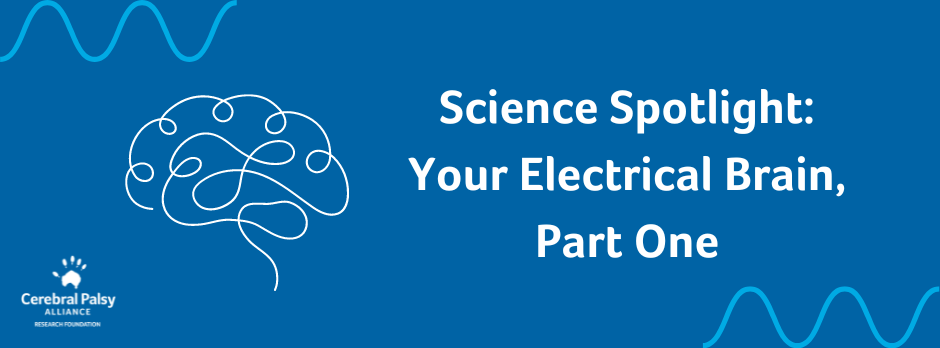
Science Spotlight: Your Electrical Brain, Part One
By Dr. Sara Lewis
Neurons produce electricity as part of their function. This is because they create unequal distributions of ions, or charged atoms, on either side of their cell membrane. When neurons respond to a signal, such as a neurotransmitter, channels on cell surface open to allow these ions to flow into or out of the cell and try to equalize. The movement of charged ions creates current, which changes the voltage of the cell.
Scientists figured out in the 1940s that you could measure the voltage and current of a single neuron cell using electrodes in a squid and have been listening to neurons ever since. For example, researchers implanted electrodes and recorded neuron responses as rodents navigated through space to discover place cells. These cells are active in specific places in the environment, which is why you can remember how to move through your house in the dark, and these studies garnered a 2014 Nobel Prize.
Starting in the early 1900s, electrodes were used to stimulate different parts of the brain during brain surgeries. Patients were awake at the time and reported what they felt when receiving the electrical stimulation. The purpose was to determine what parts of the brain were contributing to recurring seizures or tumors and then remove them, versus which parts provided essential functions and should be left alone. During these surgeries, doctors found that stimulating specific parts of the brain while patients were awake for part of their surgery evoked the same function between individuals, such as feeling a touch on the cheek or moving a finger. This technique was used to understand how sensory and motor information maps in the brain.
Collectively, many decades of neuroscience research and measurement of the brain’s electrical activities have shown that neurons in different regions have highly specialized functions and small changes in their responses can lead to a variety of disorders of the nervous system.
Measuring electrical activity to diagnose changes in neuron function has led to the creation of many tools that clinicians use. One test that measures electrical activity is an electroencephalogram, commonly known as an EEG. In this case, the electrodes sit outside the scalp and measure the synchronized activity of groups of neurons. EEG is heavily used with epileptic patients to find and describe which parts of the brain have neurons which are too active. Another test is a nerve conduction velocity (NCV) study. NCV uses one electrode to add current to stimulate neuronal activity and a second electrode to measure how fast that signal travels along the nerve. This can be used to tell if there is damage to nerves outside of the brain, such as the ones that transmit sensory information or stimulate muscles.
Another clinical tool that uses electricity is deep brain stimulation (DBS). In DBS, electrodes are surgically implanted into the brain and provide small current pulses to change the activity of the neurons around them. DBS was initially approved in 2002 to help with the symptoms of Parkinson’s disease, such as tremor and difficulty initiating movements (bradykinesia). DBS is effective for managing symptoms of dystonia, a movement disorder that’s common for people with CP. Dystonia causes unwanted movements and posture changes.
In part 2, we’ll examine how scientists are listening to the brain using DBS electrodes and how adding electricity can change brain function.

Mon 08 Sep 2025
We’re proud to share that CPARF’s 2025 Remarkable US Accelerator cohort kicks off this week! This program supports disability-focused startups that are developing cutting-edge assistive technology. Remarkable US brings life-changing ideas to market faster and ensures people with disabilities can access affordable new technology as soon as possible. Meet the 2025 Cohort: The […]
Wed 21 May 2025
Are you ready for STEPtember 2025? We’re officially in double digits — CPARF is celebrating 10 years of funding groundbreaking cerebral palsy research and driving innovation forward. And there’s no better way to mark this milestone than with our biggest, boldest STEPtember yet. Thanks to you, STEPtember has grown into a global movement that powers […]



